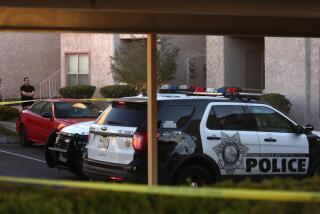Alone in a Crowd-- and Then on a Plane
- Share via
Why did a quiet, studious American kid write a suicide note supporting Osama bin Laden and then fly a Cessna into the Bank of America building in Tampa? The answers to that question already are rushing in from both sides of the culture wars, and in the ensuing blame fest we are likely to lose sight of the most important variable in the equation: Charles J. Bishop’s state of mind.
Conspiracy theories are circulating. The media have reported that the 15-year-old was of Arab descent on his father’s side and that his surname once was Bishara. This does not mean that Bishop wasn’t as patriotic as his acquaintances say he was or that the sadness he expressed over the terrorist attacks was insincere. Many questions about Bishop’s solitary life remain unanswered.
The media have focused more on the security loopholes that Bishop’s flight exposed, especially the gaping ones in noncommercial aviation. But this misses an equally important lesson: Was Bishop mentally competent?
It seems likely that Bishop’s dive-bomb into a skyscraper had more in common with the Columbine High School massacre and other school shootings than it did with the Sept. 11 assaults.
The psychological profile that emerged from the personal journals of Columbine killer Dylan Klebold indicated that the boy was a deeply depressed and paranoid outcast. Bishop, too, has been described as an unusually withdrawn, solipsistic loner who “stood apart from the others at the school bus stop” and enjoyed true friendship only with his dog.
The earmarks of a disturbed mind are all over these guys. Though we hesitate with good reason to psychoanalyze them collectively, we can’t go on denying a pattern.
Yet we also seem bent on opportunistic partisan explanations. When the story of John Walker Lindh broke, conservative pundits were quick to offer predictable explanations for how a sensitive California boy turned into a Taliban fighter. Marin County was the culprit, they acidly surmised. What else can you expect from that corrupting sinkhole of moral relativism, New Age religiosity and liberal decadence? Yet Lindh’s extreme behavior makes far more sense in the context of mental illness. One look at the video footage of his capture shows that there was probably a lot more than hunger and fatigue going on behind those vertiginous eyes.
After Columbine, liberal voices piped up just as loudly with their policy issue primers on how inadequate gun control had pulled the trigger as surely as had the two students. Democrats even made it a campaign issue.
No doubt someone will fault Bishop’s teacher, who, when discussing Sept. 11, reportedly advised her students not to be too quick to judge people because of their skin color or religion. But even mushy, politically correct pedagogy does not a killer make. Mental instability does, and we ignore it at our peril.
Guidance counselors, teachers and parents need to start paying more attention and learning to recognize the warning signs of mental illness in their charges. Our home security may, in part, depend on it.
More to Read
Sign up for Essential California
The most important California stories and recommendations in your inbox every morning.
You may occasionally receive promotional content from the Los Angeles Times.












